Breathing with Emphysema: Understanding COPD Symptoms, Causes, and Treatment Options
What are the main symptoms of emphysema. How is COPD related to smoking. What are the most effective treatments for chronic obstructive pulmonary disease. How can COPD be prevented. What lifestyle changes can improve quality of life for COPD patients.
Understanding Chronic Obstructive Pulmonary Disease (COPD)
Chronic Obstructive Pulmonary Disease, commonly known as COPD, is a group of progressive lung diseases that obstruct airflow and cause breathing-related problems. This umbrella term encompasses several conditions, including emphysema, chronic bronchitis, and in some cases, asthma. COPD is characterized by the airways and air sacs in the lungs losing their elasticity, destruction of air sac walls, inflammation of the airways, and excessive mucus production.
The progression of COPD can significantly impact a person’s quality of life, making it crucial to understand its symptoms, causes, and available treatment options. By recognizing the early signs and taking appropriate measures, individuals can better manage this chronic condition and maintain their respiratory health.
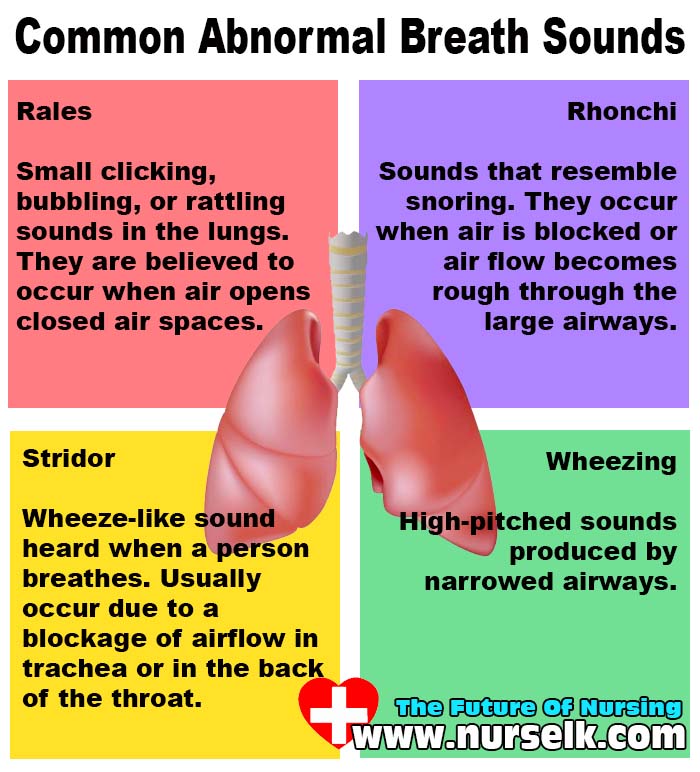
Recognizing the Symptoms of COPD
COPD symptoms often develop gradually, which can make them challenging to identify in the early stages. However, being aware of these signs can lead to earlier diagnosis and more effective management of the condition.
Early Stage Symptoms
- Persistent cough (often referred to as “smoker’s cough”)
- Shortness of breath, particularly during physical activities
- Wheezing or a whistling sound while breathing
- Chest tightness
Advanced Stage Symptoms
- Difficulty catching breath or speaking
- Blue or gray discoloration of lips and fingernails (indicating low blood oxygen levels)
- Decreased mental alertness
- Rapid heartbeat
- Swelling in feet and ankles
- Unintended weight loss
The severity of COPD symptoms is directly related to the extent of lung damage. Continued smoking can accelerate this damage, emphasizing the importance of smoking cessation in managing the condition.
The Smoking-COPD Connection: Understanding the Risks
Smoking is the primary cause of COPD, accounting for up to 80% of COPD-related deaths. However, it’s important to note that not all COPD cases are linked to smoking, as approximately 25% of Americans with COPD have never smoked cigarettes.
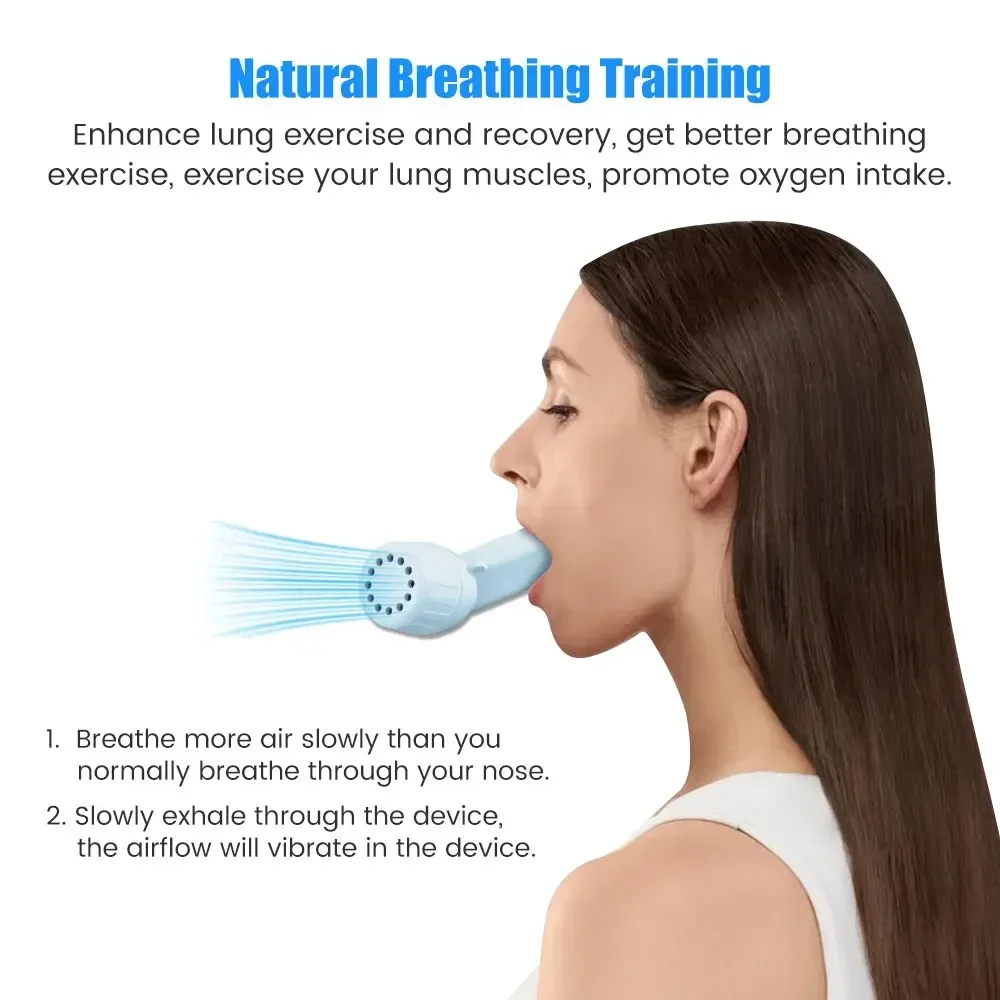
How does smoking contribute to COPD development? Tobacco smoke contains numerous harmful chemicals that can damage lung tissue, leading to inflammation and loss of elasticity in the airways. This damage accumulates over time, increasing the risk of developing COPD.
Smoking during childhood and adolescence can have long-lasting effects on lung development, potentially increasing the risk of COPD in adulthood. This underscores the importance of preventing smoking initiation and promoting smoking cessation, especially among young people.
Preventive Measures: Safeguarding Your Lung Health
Prevention is key when it comes to COPD, and the most effective preventive measure is to avoid smoking altogether. For those who already smoke, quitting is crucial to reduce the risk of developing COPD or slow its progression.
Steps to Prevent COPD
- Never start smoking, or quit if you currently smoke
- Avoid exposure to secondhand smoke
- Protect yourself from occupational exposures to dust, chemicals, and fumes
- Get vaccinated against respiratory infections like influenza and pneumonia
- Maintain good indoor air quality
Can secondhand smoke contribute to COPD development? Yes, exposure to secondhand smoke can increase the risk of developing COPD, even in non-smokers. It’s important to create smoke-free environments and avoid areas where smoking is permitted to protect your lung health.
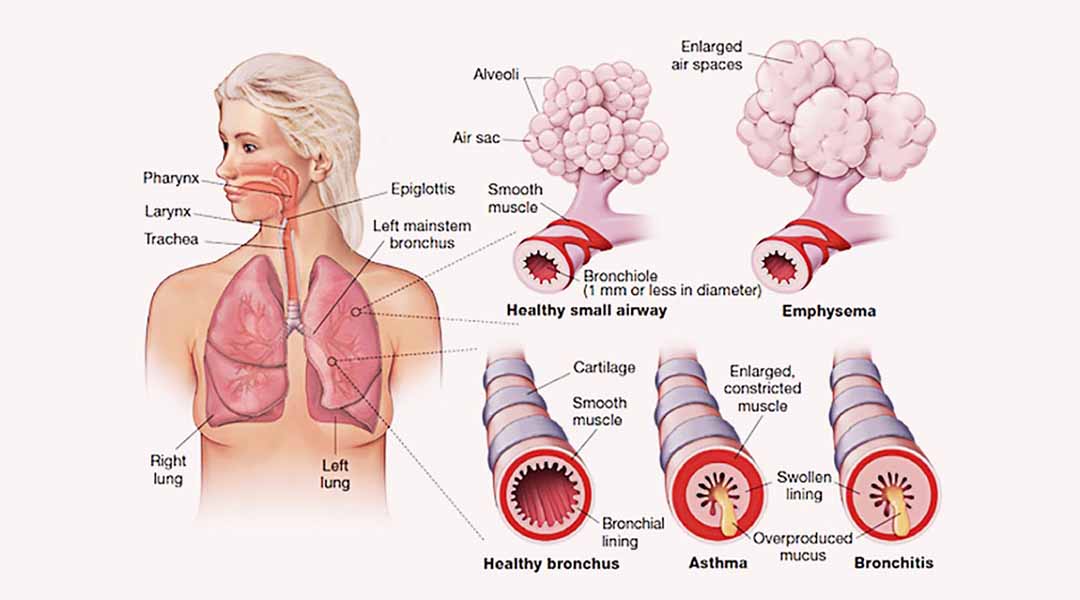
Comprehensive Treatment Approaches for COPD
While there is no cure for COPD, various treatment options can help manage symptoms, improve quality of life, and slow disease progression. A comprehensive treatment plan typically involves a combination of lifestyle changes, medications, and supportive therapies.
Lifestyle Modifications
- Smoking cessation
- Dietary adjustments (smaller, more frequent meals)
- Regular exercise within individual limitations
- Stress management techniques
Medications
- Bronchodilators to relax airway muscles
- Inhaled corticosteroids to reduce airway inflammation
- Antibiotics for respiratory infections
- Combination therapies as prescribed by a healthcare provider
Supportive Therapies
- Pulmonary rehabilitation programs
- Oxygen therapy for severe cases
- Vaccinations against influenza and pneumococcal pneumonia
In some severe cases, surgical interventions such as lung volume reduction surgery or lung transplantation may be considered. These procedures are typically reserved for patients who have not responded well to other treatments and meet specific criteria.

Pulmonary Rehabilitation: A Cornerstone of COPD Management
Pulmonary rehabilitation plays a crucial role in improving the well-being of individuals with chronic breathing problems, including COPD. This comprehensive program combines various elements to enhance physical and emotional function, ultimately leading to a better quality of life.
Components of Pulmonary Rehabilitation
- Exercise training tailored to individual capabilities
- Nutritional counseling to support overall health
- Education on lung disease management
- Energy conservation techniques
- Breathing strategies to improve respiratory efficiency
- Psychological support and group counseling
How effective is pulmonary rehabilitation for COPD patients? Numerous studies have shown that pulmonary rehabilitation can significantly improve exercise capacity, reduce shortness of breath, and enhance quality of life for individuals with COPD. It can also help reduce hospital admissions and improve overall disease management.
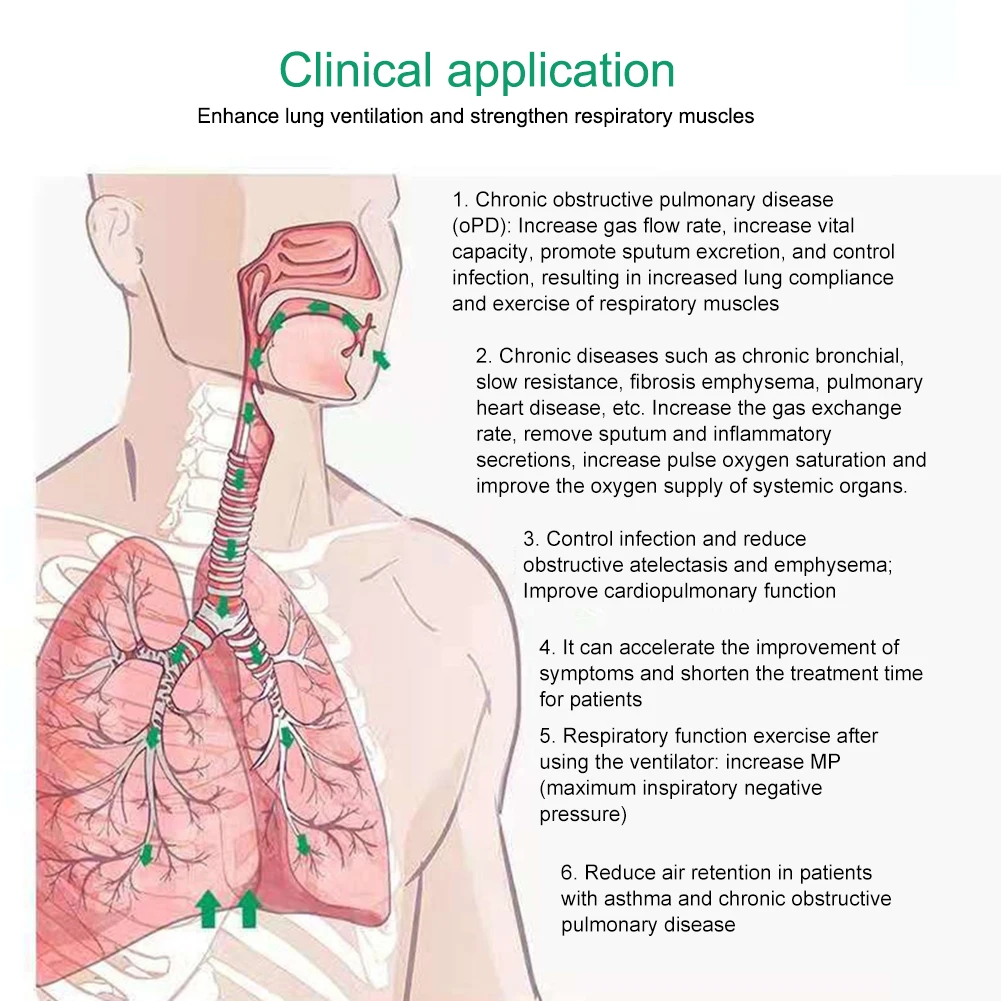
Nutritional Considerations for COPD Patients
Proper nutrition plays a vital role in managing COPD symptoms and maintaining overall health. Many individuals with COPD experience difficulties with eating due to shortness of breath or fatigue, which can lead to malnutrition and further complications.
Dietary Strategies for COPD Management
- Consuming smaller, more frequent meals to reduce the burden on the respiratory system
- Focusing on nutrient-dense foods to meet nutritional needs
- Incorporating foods rich in antioxidants to support lung health
- Staying hydrated to help thin mucus secretions
- Limiting salt intake to prevent fluid retention
Should COPD patients consider vitamin and mineral supplements? While a balanced diet should provide most necessary nutrients, some COPD patients may benefit from specific supplements. It’s essential to consult with a healthcare provider or registered dietitian before starting any supplementation regimen, as some supplements can interact with COPD medications or have unintended effects.
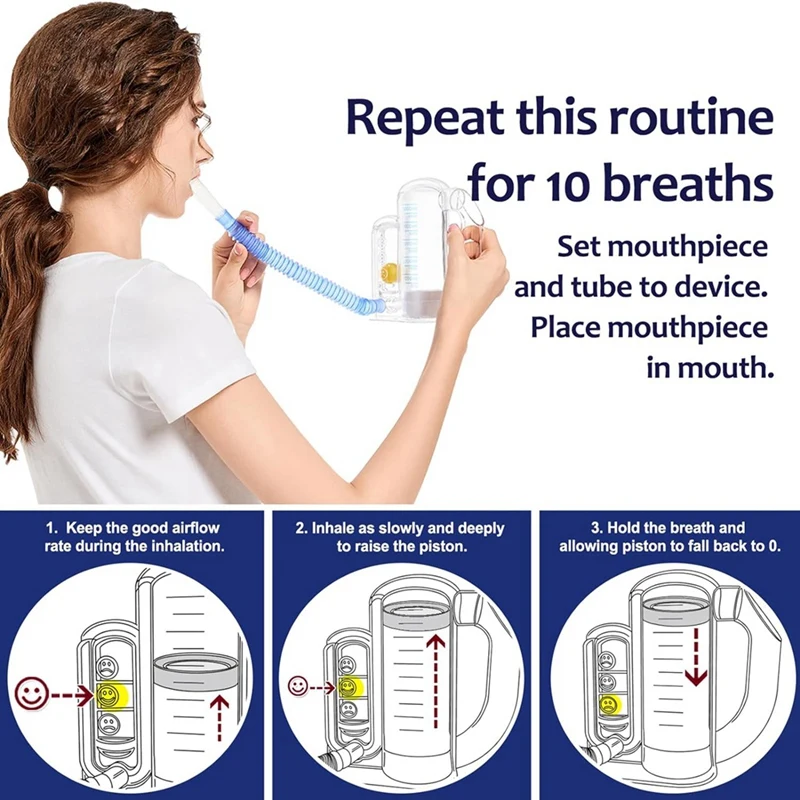
Advances in COPD Research and Future Treatment Prospects
The field of COPD research is constantly evolving, with scientists and medical professionals working tirelessly to improve understanding of the disease and develop new treatment options. Recent advances have opened up exciting possibilities for more effective management of COPD.
Promising Areas of COPD Research
- Gene therapy to address underlying genetic factors
- Stem cell therapy for lung tissue regeneration
- Development of more targeted and effective medications
- Improved delivery systems for inhaled medications
- Novel approaches to reducing airway inflammation
What potential breakthroughs are on the horizon for COPD treatment? While it’s difficult to predict specific breakthroughs, ongoing research in areas such as biomarker identification, personalized medicine, and lung regeneration techniques hold promise for more tailored and effective COPD treatments in the future. These advancements could potentially lead to better symptom management, slowed disease progression, and improved quality of life for COPD patients.

As research continues to progress, it’s crucial for individuals with COPD to stay informed about new developments and discuss potential treatment options with their healthcare providers. By staying engaged in their care and being open to new approaches, COPD patients can take an active role in managing their condition and optimizing their respiratory health.
Living with COPD can be challenging, but with proper management, support, and ongoing medical care, many individuals can maintain a good quality of life. By understanding the disease, recognizing its symptoms, and actively participating in treatment plans, those affected by COPD can better navigate their journey towards improved respiratory health and overall well-being.
Chronic Obstructive Pulmonary Disease (COPD) | Smoking and Tobacco Use
- How Is Smoking Related to COPD?
- How Can COPD Be Prevented?
- How Is COPD Treated?
- Additional Resources
- References
Chronic obstructive pulmonary disease (COPD) refers to a group of diseases that cause airflow blockage and breathing-related problems. COPD includes emphysema; chronic bronchitis; and in some cases, asthma.1
With COPD, less air flows through the airways—the tubes that carry air in and out of your lungs—because of one or more of the following:2,3
- The airways and tiny air sacs in the lungs lose their ability to stretch and shrink back.
- The walls between many of the air sacs are destroyed.
- The walls of the airways become thick and inflamed (irritated and swollen).
- The airways make more mucus than usual, which can clog them and block air flow.
In the early stages of COPD, there may be no symptoms, or you may only have mild symptoms, such as:4
- A nagging cough (often called “smoker’s cough”)
- Shortness of breath, especially with physical activity
- Wheezing (a whistling sound when you breathe)
- Tightness in the chest
As the disease gets worse, symptoms may include:4
- Having trouble catching your breath or talking
- Blue or gray lips and/or fingernails (a sign of low oxygen levels in your blood)
- Trouble with mental alertness
- A very fast heartbeat
- Swelling in the feet and ankles
- Weight loss
How severe your COPD symptoms are depends on how damaged your lungs are. If you keep smoking, the damage will get worse faster than if you stop smoking.4 Among 15 million U.S. adults with COPD, 39% continue to smoke.5
If you keep smoking, the damage will get worse faster than if you stop smoking.4 Among 15 million U.S. adults with COPD, 39% continue to smoke.5
- How Is Smoking Related to COPD?
- How Can COPD Be Prevented?
- How Is COPD Treated?
- Additional Resources
- References
COPD is usually caused by smoking.3 Smoking accounts for as many as 8 out of 10 COPD-related deaths.6 However, as many as 1 out of 4 Americans with COPD never smoked cigarettes.5
Smoking during childhood and teenage years can slow how lungs grow and develop. This can increase the risk of developing COPD in adulthood.7
Top of Page
The best way to prevent COPD is to never start smoking, and if you smoke, quit.8 Talk with your doctor about programs and products that can help you quit. Also, stay away from secondhand smoke, which is smoke from burning tobacco products, such as cigarettes, cigars, or pipes. 6,9,10 Secondhand smoke also is smoke that has been exhaled, or breathed out, by a person smoking.9,10
6,9,10 Secondhand smoke also is smoke that has been exhaled, or breathed out, by a person smoking.9,10
Top of Page
Treatment of COPD requires a careful and thorough exam by a doctor.1 Quitting smoking is the most important first step you can take to treat COPD. Avoiding secondhand smoke is also critical. Other lifestyle changes and treatments include one or more of the following:
- For people with COPD who have trouble eating because of shortness of breath or being tired:11
- Following a special meal plan with smaller, more frequent meals
- Resting before eating
- Taking vitamins and nutritional supplements
- A broad program that helps improve the well-being of people who have chronic (ongoing) breathing problems and includes the following:12
- Exercise training
- Nutritional counseling
- Education on your lung disease or condition and how to manage it
- Energy-conserving techniques
- Breathing strategies
- Psychological counseling and/or group support
- Medicines such as:
- A bronchodilator to relax the muscles around the airways.
 This helps open airways and makes breathing easier. Most bronchodilators are taken with a device called an inhaler.11
This helps open airways and makes breathing easier. Most bronchodilators are taken with a device called an inhaler.11 - A steroid drug you inhale to reduce swelling in the airways.11
- Antibiotics to treat respiratory infections, if appropriate1
- A vaccination during flu season1
- A bronchodilator to relax the muscles around the airways.
- Oxygen therapy, which can help people who have severe COPD and low levels of oxygen in their blood to breathe better11
- Surgery for people who have severe symptoms that have not improved with other treatments11
- Lung volume reduction surgery (LVRS): Surgery to remove diseased parts of the lung so healthier lung tissue can work better. LVRS is not a cure for COPD.
- A lung transplant: Surgery in which one or two healthy lungs from a donor are put in the patient’s body to replace diseased lungs. A lung transplant is a last resort.
Even though there is no cure for COPD, these lifestyle changes and treatments can help you breathe easier, stay more active, and slow the progress of the disease. 11
11
Top of Page
The following resources provide information and support to people with COPD and their caregivers:
- To learn more about COPD, visit the National Heart, Lung, and Blood Institute’s COPD Learn More Breathe Better Web page.
- To find peer support, an online community, and events in your area, visit the COPD Foundation Web site and 360Social.
- To join a network of patients affected by COPD, visit the COPD Patient-Powered Research Network, which is a lung health research registry.
- To learn more about lung health and diseases, visit the American Lung Association’s COPD Web page.
- To find peer support and resources for patients and caregivers, contact the C.O.P.D. Information Line at 1-866-316-2673.
Top of Page
- Centers for Disease Control and Prevention. What Is COPD? [last updated 2015 Mar 12; accessed 2015 Nov 11].
- National Heart, Lung, and Blood Institute. How Does COPD Affect Breathing? [accessed 2015 Nov 11].

- National Heart, Lung, and Blood Institute. What Is COPD? [last updated 2013 July 31; accessed 2015 Nov 11].
- National Heart, Lung, and Blood Institute. What Are the Signs and Symptoms of COPD? [last updated 2013 July 31; accessed 2015 Nov 11].
- Centers for Disease Control and Prevention. Chronic Obstructive Pulmonary Disease Among Adults—United States, 2011. Morbidity and Mortality Weekly Report 2012;61(46):938–43 [accessed 2015 Nov 11].
- U.S. Department of Health and Human Services. The Health Consequences of Smoking—50 Years of Progress: A Report of the Surgeon General. Atlanta: U.S. Department of Health and Human Services, Centers for Disease Control and Prevention, National Center for Chronic Disease Prevention and Health Promotion, Office on Smoking and Health, 2014 [accessed 2015 Nov 11].
- U.S. Department of Health and Human Services. A Report of the Surgeon General. Preventing Tobacco Use Among Youth and Young Adults: We CAN Make the Next Generation Tobacco-Free.
 Atlanta: U.S. Department of Health and Human Services, Centers for Disease Control and Prevention, National Center for Chronic Disease Prevention and Health Promotion, Office on Smoking and Health [accessed 2015 Nov 11].
Atlanta: U.S. Department of Health and Human Services, Centers for Disease Control and Prevention, National Center for Chronic Disease Prevention and Health Promotion, Office on Smoking and Health [accessed 2015 Nov 11]. - National Heart, Lung, and Blood Institute. How Can COPD Be Prevented? [last updated 2013 July 31; accessed 2015 Nov 11].
- Institute of Medicine. Secondhand Smoke Exposure and Cardiovascular Effects: Making Sense of the Evidence. Washington: National Academy of Sciences, Institute of Medicine, 2009 [accessed 2015 Nov 11].
- National Toxicology Program. Report on Carcinogens, Thirteenth Edition. Research Triangle Park (NC): U.S. Department of Health and Human Services, Public Health Service, 2014 [accessed 2015 Nov 11].
- National Heart, Lung, and Blood Institute. How Is COPD Treated? [last updated 2013 July 31; accessed 2015 Nov 11].
- National Heart, Lung, and Blood Institute. What Is Pulmonary Rehabilitation? [last updated 2010 Aug 1; accessed 2015 Nov 11].

Emphysema – Harvard Health
What is it?
Emphysema is a respiratory disease. In this condition, millions of the lungs’ tiny air sacs (alveoli) stretch out of shape or rupture. As these thin, fragile air sacs become damaged or destroyed, the lungs lose their natural elasticity. They become unable to empty easily.
Emphysema is a progressive disease, which means it continues to get worse. As the condition progresses, the lungs lose their ability to absorb oxygen and release carbon dioxide. Breathing becomes more difficult. A person feels easily short of breath, like he or she is not getting enough air.
Emphysema and chronic bronchitis are the two most common forms of chronic obstructive pulmonary disease (COPD). They often occur together. Bronchitis is an inflammation and swelling of the bronchial walls. A person with chronic bronchitis typically has a daily cough with phlegm that lasts for months at a time over several years.
Smoking is responsible for the vast majority of cases of emphysema. Exposure to secondhand smoke and airborne toxins also can contribute to emphysema, though to a much lesser degree. Smokers exposed to high levels of air pollution appear to be at higher risk of developing COPD.
Exposure to secondhand smoke and airborne toxins also can contribute to emphysema, though to a much lesser degree. Smokers exposed to high levels of air pollution appear to be at higher risk of developing COPD.
Both emphysema and chronic bronchitis are caused by damage to the lungs and bronchial tubes. When the damage is caused by smoking, symptoms may improve after a smoker quits.
A small number of people in the United States develop emphysema from an inherited disease known as alpha 1-antitrypsin deficiency. In this genetic condition, the body doesn’t make enough of a protein called alpha 1-antitrypsin (AAT). AAT protects the lungs from damage by enzymes. When levels of AAT are low, the lungs are prone to being damaged by these enzymes. Smoking makes this condition worse.
Symptoms
During the early stages of emphysema, most people will have few symptoms. The disease usually progresses slowly. Changes in breathing may be hardly noticed. A typical person will not experience symptoms until they have smoked a pack of cigarettes per day for more than 20 years.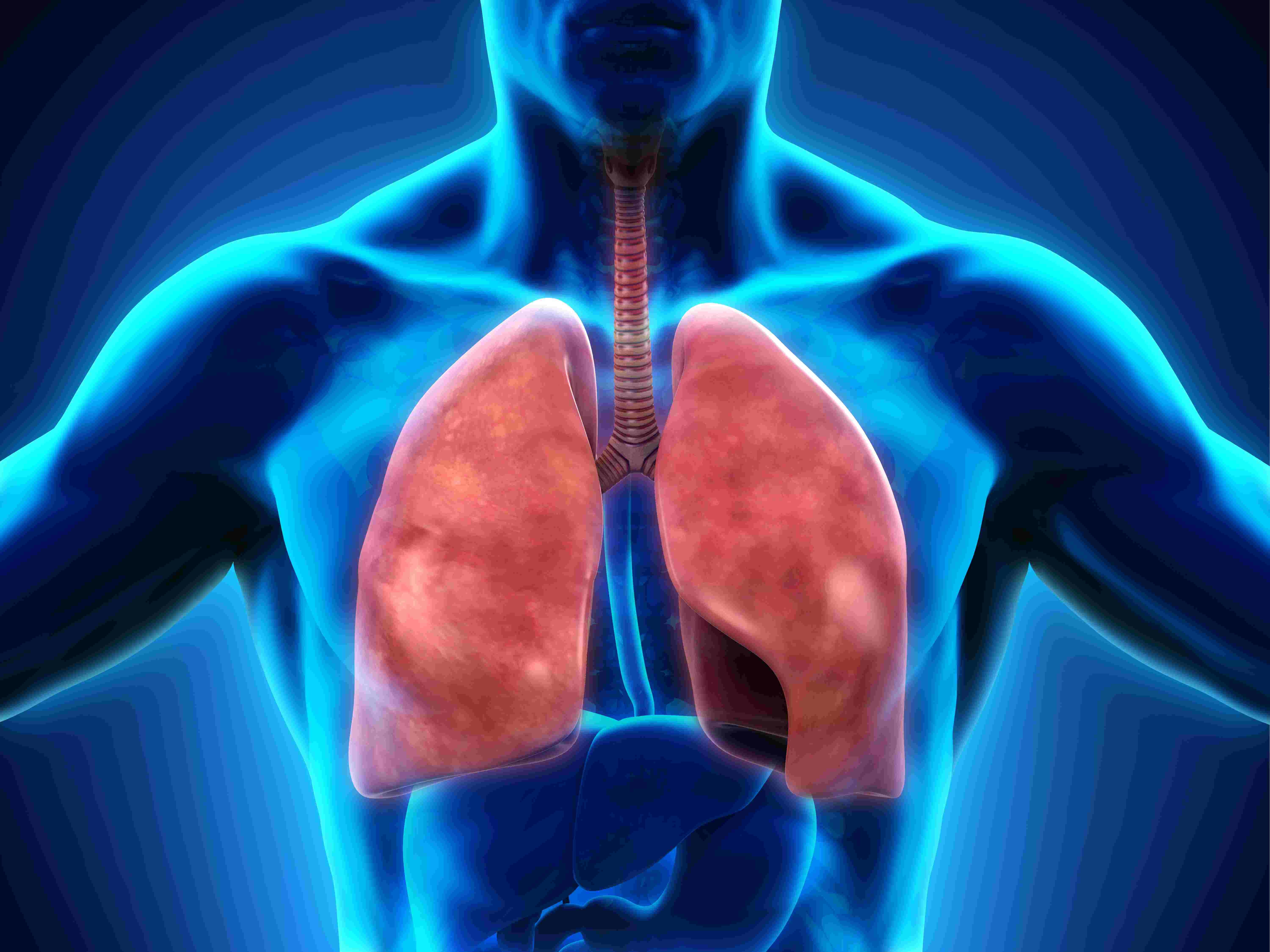
However, over time, almost all people with emphysema will develop shortness of breath. At first, this may be noticed only during strenuous activities, such as climbing several flights of stairs or playing sports. As time goes on, the shortness of breath may occur with daily activities, such as housework or walking short distances. Eventually, the person may be short of breath for much of the day, even while at rest or sleeping. At its worst, emphysema can cause “air hunger.” This is the constant feeling of being unable to catch one’s breath.
These respiratory symptoms are the same regardless of the cause of the emphysema. However, two people with the same degree of lung damage may have different symptoms. One person with mild emphysema may feel very short of breath. Another person with more advanced stages of the disease may be hardly bothered by symptoms.
Other symptoms caused by emphysema include:
- Wheezing
- Coughing
- Bringing up phlegm (if chronic bronchitis also is present)
- Tightness feeling in the chest
- Barrel-like distended chest
- Constant fatigue
- Difficulty sleeping
- Morning headaches
- Weight loss
- Swelling of the ankles
- Lethargy or difficulty concentrating
Diagnosis
Your doctor will ask for details about your smoking. He or she will ask how long you’ve smoked, and how many cigarettes per day.
He or she will ask how long you’ve smoked, and how many cigarettes per day.
Other questions may include:
- Do you breathe passive (secondhand) smoke at work or at home?
- Do you live or work in an area where you are exposed to airborne irritants or noxious materials?
- Do you live in an area with significant air pollution?
- Is there a family history of:
- AAT deficiency
- Early onset of emphysema
- Non-smokers who developed emphysema
Your doctor also will ask about your respiratory symptoms. He or she will want to know if and when you develop shortness of breath. The doctor also may wish to ask about:
- Respiratory allergies
- Recurrent bad colds
- A persistent, heavy cough
Your doctor then will examine you to look for typical signs of emphysema. This may include:
- Watching for shortness of breath when you perform simple activities, such as walking into the exam room
- Looking at the size and shape of your chest
- Looking at how your chest moves when you breathe
- Listening to your lungs for wheezing or loss of the normal breath sounds
- Checking your ears, nose and throat for reasons why you may be coughing
- Listening to your heart
- Checking your skin, lips and fingernails for a bluish tint that indicates low blood oxygen levels.
 (Your doctor also may directly measure your blood oxygen level with a finger probe known as an oximeter.)
(Your doctor also may directly measure your blood oxygen level with a finger probe known as an oximeter.) - Checking your fingernails for an unusual curvature (“clubbing”) that sometimes occurs with chronic lung disease
- Feeling your ankles for swelling that indicates fluid accumulation
The results of this examination may be totally normal in many people in the earliest stages of emphysema.
In most people, emphysema will be diagnosed by X-ray or lung-function tests.
A regular chest X-ray may show typical changes of emphysema. These include:
- Enlargement of the lungs
- Scarring
- Formation of holes (bullae)
However, these changes may not appear until significant damage has occurred. Computed tomography (CT) scans are better for detecting the earliest changes of emphysema. CT scans may help to diagnose the disease in younger people or those who have never smoked.
Pulmonary function testing is useful both to diagnose emphysema and to determine the stage of the disease. This test is also known as spirometry. In this test you will blow forcefully through a tube. The tube is connected to a machine that measures your lung capacity.
Your doctor also may order specialized lung tests. These may require you to sit inside a glass box, or slowly breathe in a mixture of different gases.
Other tests your doctor may order include:
- Arterial blood gases. Measures the levels of oxygen and carbon dioxide in your blood. The blood is taken by a needle from a small artery in the wrist.
- Electrocardiogram (EKG). Looks for evidence of heart problems that may cause more shortness of breath than emphysema alone. An EKG also looks for heart strain caused by emphysema.
If suspected, your doctor can order a blood test to confirm the diagnosis of AAT deficiency. If this test is positive, your doctor may recommend screening for your entire family.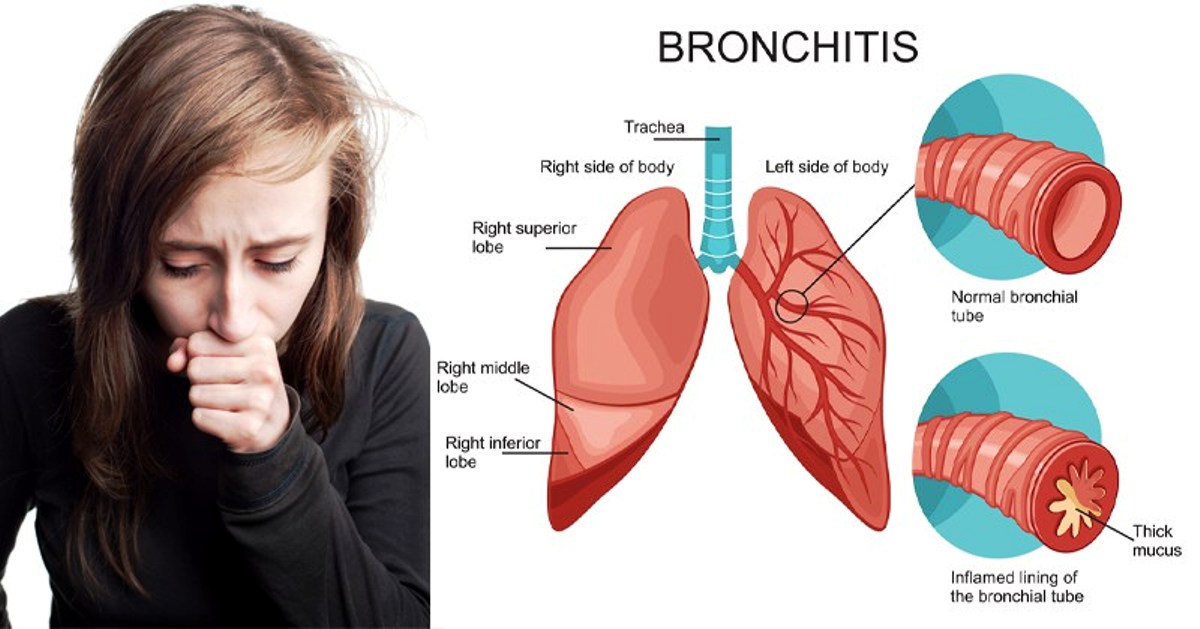
Expected duration
Regardless of the cause, lung damage in emphysema cannot be reversed. If the disease is not treated, damage and symptoms will continue to get worse. If treated, the symptoms can improve.
Prevention
If you smoke, stop. If you don’t smoke, don’t start. By quitting smoking you can either prevent emphysema or slow its progression.
You also should limit your exposure to air pollution. Restrict your outdoor activity when there are reports of high smog levels.
People exposed to harmful chemicals at work should speak to their employers about respirator masks. Or, consult with a specialist in occupational medicine.
If you have emphysema, ask your doctor about vaccinations against influenza (flu) and pneumococcal pneumonia. These vaccinations can help to prevent life-threatening respiratory infections in people with lung disease.
Treatment
No treatment can reverse or stop emphysema. But treatment can help to:
- Relieve symptoms
- Treat complications
- Minimize disability
Doctors’ top treatment advice is to quit smoking.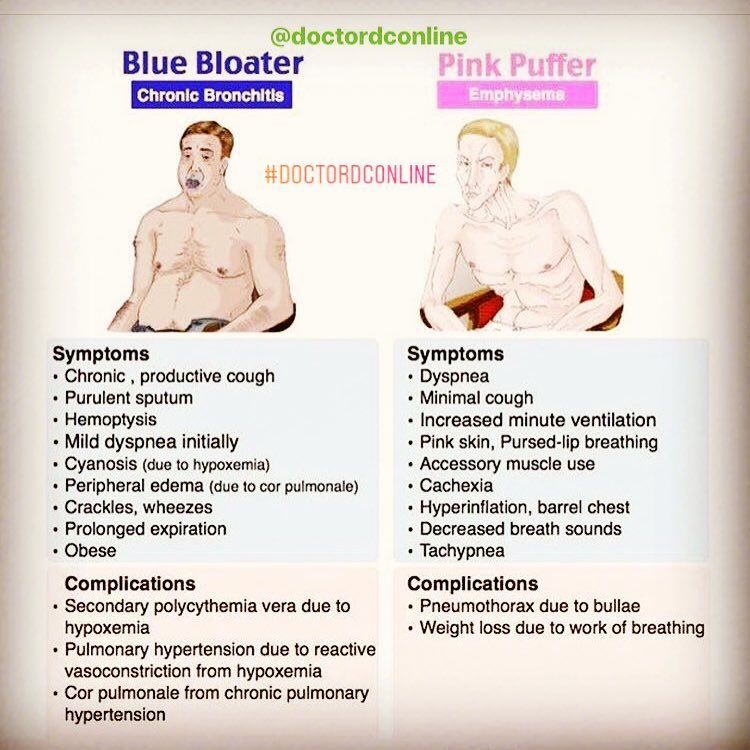 This is the single most important factor for maintaining healthy lungs. Stopping smoking is most effective at the early stages of emphysema. But it also can slow the loss of lung function in later stages of the disease.
This is the single most important factor for maintaining healthy lungs. Stopping smoking is most effective at the early stages of emphysema. But it also can slow the loss of lung function in later stages of the disease.
People with AAT deficiency may be candidates for replacement therapy. This is done with infusions of natural AAT obtained from donors. This form of treatment appears effective. But it is time consuming and very expensive.
Your doctor may prescribe a number of different medications. These can help to relieve symptoms. Medications may include:
- Bronchodilators Inhalers.
- Tiotropium (Spiriva)
- Ipratropium (Atrovent)
- Albuterol (Proventil, Ventolin, others)
- Salmeterol (Serevent)
- Formoterol (Foradil)
These medications are taken through hand-held inhalers or machine-driven nebulizers. These create a fine mist that can be inhaled.
These create a fine mist that can be inhaled.
Bronchodilators help to open the bronchial tubes in your lungs. By doing so, they reduce shortness of breath, wheezing and cough.
Theophylline (sold under several brand names) is a pill form of a bronchodilator. Because it can interact with medications and cause side effects, it is used less often than the inhaler medications.
- Corticosteroids. These medications help to reduce inflammation in the lungs. During an acute flare-up of symptoms, they often are given in pill form or by injection.
Inhaled corticosteroids or pills may be prescribed for daily use. They help control the inflammation of chronic bronchitis.
- Combination Corticosteroid/ Long-Acting Bronchodilator Inhalers.
- Budesonide and formoterol (Symbicort)
- Fluticasone and salmeterol (Advair)
- Mometasone and formoterol (Dulera)
These combination products provide both anti-inflammatory action and airway opening in one inhaler.
- Antibiotics. These typically are used for acute flare-ups of COPD triggered by respiratory infections.
Oxygen therapy increases life expectancy in people with emphysema who have below-normal levels of oxygen in the blood. Oxygen usually is given through a plastic tube (nasal cannula) worn under the nostrils. The oxygen may be stored in metal cylinders. Or, it may be purified from air by an oxygen concentrator.
A number of lightweight, portable devices are available. They allow those who need oxygen to leave their homes for hours at a time.
Some people with emphysema need oxygen only at night.
Supplying oxygen at home is very expensive. As a result, most medical insurance companies have strict requirements to qualify for home oxygen.
People with emphysema also are at risk of becoming malnourished. It is important to see your doctor regularly about an appropriate diet. They are also at risk for developing psychological problems such as anxiety or depression. Counseling or medications can help.
Counseling or medications can help.
Pulmonary rehabilitation is a form of physical therapy. It includes a structured exercise program combined with special breathing techniques, psychological support and education. It helps people with emphysema:
- Conserve energy
- Improve stamina
- Reduce breathlessness
- Have a better sense of well-being
Other treatments may be considered for people with advanced stages of emphysema.
- Lung volume reduction surgery. In this technique, parts of diseased lung are removed to improve the function of remaining, healthier lung.
- Lung transplant. A transplant may be considered in certain individuals with severe disease.
When to call a professional
Call your doctor if you develop:
- New shortness of breath
- A persistent cough, with or without phlegm
- A decrease in your usual ability to exercise
- Frequent respiratory infections
If you smoke, see your doctor about ways to quit. Several different types of treatment can increase your likelihood of success compared to “going cold turkey.” These include medications and counseling.
Several different types of treatment can increase your likelihood of success compared to “going cold turkey.” These include medications and counseling.
You also should see your doctor if anyone in your family has been diagnosed with AAT deficiency.
Prognosis
There is no cure for emphysema. But the condition can be controlled.
People with mild emphysema who quit smoking have a normal life expectancy. Those who adopt good health habits can enjoy a fairly normal lifestyle for a long time. Even people whose emphysema is severe have a good chance of surviving for five years or more.
In people with emphysema who continue to smoke, smoking dramatically increases the severity of the illness. It may reduce life span by 10 years or more.
Additional info
American Lung Association
https://www.lung.org/
National Heart, Lung, and Blood Institute (NHLBI)
https://www. nhlbi.nih.gov/
nhlbi.nih.gov/
3 main causes of pulmonary emphysema
Emphysema is one of the diseases that, together with chronic bronchitis and other disorders, is a representative of chronic obstructive pulmonary disease. In people with this disease, the bronchial tubes and air sacs, called alveoli, are damaged in the lungs. Over time, their inner walls weaken and rupture. The surface area of the lungs decreases, which in turn reduces the amount of oxygen that reaches the bloodstream.
A person can live for many years and not notice any signs of illness. The main symptom of this disorder is gradually manifesting shortness of breath.
Some people avoid exercise or any activity at the time of the onset of shortness of breath. This is not surprising, because with emphysema, breathing becomes difficult and a person has a lack of air. Thus, this disorder becomes a problem only when it interferes with the performance of daily tasks associated with physical activity. A sign of emphysema in the later stages is shortness of breath, which worries even at rest.
A sign of emphysema in the later stages is shortness of breath, which worries even at rest.
When to run to the doctor?
If you have had unexplained shortness of breath for several months, especially if it interferes with daily tasks, you should see a doctor. Don’t ignore this symptom of emphysema by telling yourself that shortness of breath is just a consequence of aging or being out of shape.
Seek immediate medical attention if you have the following signs of emphysema:
- Shortness of breath so severe that you are unable to climb stairs,
- Lips and nails become blue or gray during physical exertion.
- You feel as if you are about to pass out.
The main cause of this disease is long-term exposure to irritants in the respiratory tract. These irritants include:
- Tobacco smoke,
- Polluted air,
- Chemical fumes and dust.
Rarely, this disease is caused by an inherited deficiency of a protein that protects the elastic structures of the lungs. In this case, the disorder is called alpha-1 antitrypsin deficiency emphysema.
In this case, the disorder is called alpha-1 antitrypsin deficiency emphysema.
So, among the risk factors:
- Smoking, including passive smoking. This includes not only smoking regular cigarettes, but also pipes and cigars. The longer and more often a person smokes, the higher the risk of developing emphysema.
- Work in factories where a person inhales fumes or dust. If a person regularly inhales chemicals, as well as dust from grain, cotton, wood or rocks, he is at great risk of getting sick. The risk is even higher if the person also smokes.
- Exposure to polluted air – inhalation of vapors from fuel combustion, as well as automobile exhaust gases.
What are the complications of emphysema?
If left untreated, the patient is more likely to experience the following complications:
- Lung collapse (pneumothorax). This is a life-threatening condition that affects some patients with a severe form of the disease.

- Heart problems. Emphysema can increase pressure in the arteries that connect the heart and lungs. In this case, the right ventricle of the heart expands and weakens.
- Formation of large holes in the lungs. In some patients, empty spaces called bullae form in the lungs. Sometimes they occupy half of the lung. In addition to reducing the space available for lung expansion, giant bullae increase the risk of pneumothorax.
How is emphysema diagnosed?
Doctors prescribe various procedures to diagnose this disease, including:
- Chest x-ray. This diagnostic method helps to detect the disease at later stages, as well as to exclude other causes of shortness of breath. However, x-rays may show a normal result even if the person has emphysema.
- Computed tomography. This method helps to detect the disease at different stages.
- Lung function test – spirometry. This non-invasive method measures how much air the lungs can hold.
 It also shows how well air moves in and out of the lungs.
It also shows how well air moves in and out of the lungs. - Blood test. This procedure is performed to determine how well the lungs carry oxygen and remove carbon dioxide from the bloodstream.
How to treat emphysema ?
None of the chronic obstructive pulmonary diseases is curable. Medication and other treatments help control symptoms and slow the progression of the disorder. Depending on the severity of symptoms, doctors may prescribe one or more drugs:
- Bronchodilators. These medicines help relax the muscles in the narrowed airways. Due to this, cough, shortness of breath and other breathing problems are alleviated.
- Inhaled steroids. Corticosteroid medications, inhaled as aerosol sprays, reduce inflammation and help with shortness of breath.
- Antibiotics. If the patient has a bacterial infection, such as acute bronchitis or pneumonia, in this case, he is prescribed antibiotics.
Additional treatments for emphysema include:
- Pulmonary rehabilitation with a set of breathing exercises.
 The purpose of this rehabilitation is to reduce shortness of breath and improve the ability to perform physical exercises.
The purpose of this rehabilitation is to reduce shortness of breath and improve the ability to perform physical exercises. - Diet therapy. In the early stages of the disease, many patients need to lose weight. But in the later stages of emphysema, patients often need to gain weight. Here you will need the help of a dietitian.
- Oxygen therapy. In a severe form of the disease with a low concentration of oxygen in the blood, a person is shown oxygen therapy. This procedure involves inhaling oxygen-enriched air through a special mask or nasal catheter.
Surgical treatment of emphysema
lung volume. During this procedure, the surgeon removes small pieces of damaged lung tissue. Removal of the pathological tissue allows the “healthy” tissue to straighten out. As a result, the lungs begin to do their job more efficiently, and the patient’s breathing improves.

How to relieve emphysema?
In order to slow the progression of the disease and protect against complications, it is recommended:
- Avoid cigarettes and avoid secondhand smoke. This is the most important and the only measure that can stop the progression of emphysema.
- Avoid other respiratory irritants. These include fumes from paint and car exhaust, perfume, dust, burning candles and incense. Air conditioner filters should also be changed regularly.
- Move more often. Shortness of breath should not stop you, because regular exercise can significantly increase lung capacity.
- Protect airways from cold air. Cold air provokes spasms in the bronchial passages, which makes breathing even harder. In the cold season, before going outside, fasten a soft scarf over your mouth and nose. Thanks to this trick, the air will already be warmed up before it enters the lungs.
- Get vaccinated. Be sure to get annual flu and pneumonia shots.

- Watch out for respiratory infections. Do your best to avoid contact with people who have colds. If you have to communicate with large groups of people during colds and flu epidemics, wear a mask. It is also recommended that you wash your hands often and have an alcohol-based hand sanitizer spray on hand.
Sources:
- Emphysema, Mayo Clinic,
- Learn about Emphysema, American College of Chest Physicians,
- Emphysema, American Lung Association.
shortness of breath
therapist
cough
Emphysema: symptoms, treatment and prevention
Contents
- 1 Emphysema: causes, symptoms and treatments
- 1.1 Emphysema: symptoms, treatment and prevention
- 1.2 What is pulmonary emphysema?
- 1.3 Symptoms of emphysema
- 1.4 Diagnosis of emphysema
- 1.5 What treatment can be used for emphysema?
- 1.5.1 Main methods of treatment:
- 1.
 6 Prevention of emphysema
6 Prevention of emphysema - 1.7 Complications of emphysema
- 1.8 Folk remedies for the treatment of emphysema
- 90 019 1.8.1 1. Herb tincture
- 1.8.2 2. Onion decoction
- 1.8.3 3. False pepper in the treatment of emphysema
- 1.8.4 4. Milk decoction with honey
- 1.9 Problems in the treatment of emphysema
- 1.10 Types of emphysema
- 1.11 How can emphysema be prevented?
- 1.12 Doctors who can help with emphysema
- 1.13 Related videos:
- 1.14 Q&A:
- 1.14.0.1 What is emphysema?
Emphysema is a chronic disease that leads to destruction of lung tissue and deterioration of lung function. Symptoms, causes and methods of treatment of this disease are in the article on our website.
Pulmonary emphysema is a disease that is characterized by the destruction of the walls of the small bronchi and alveoli, which leads to a violation of gas exchange in the human body.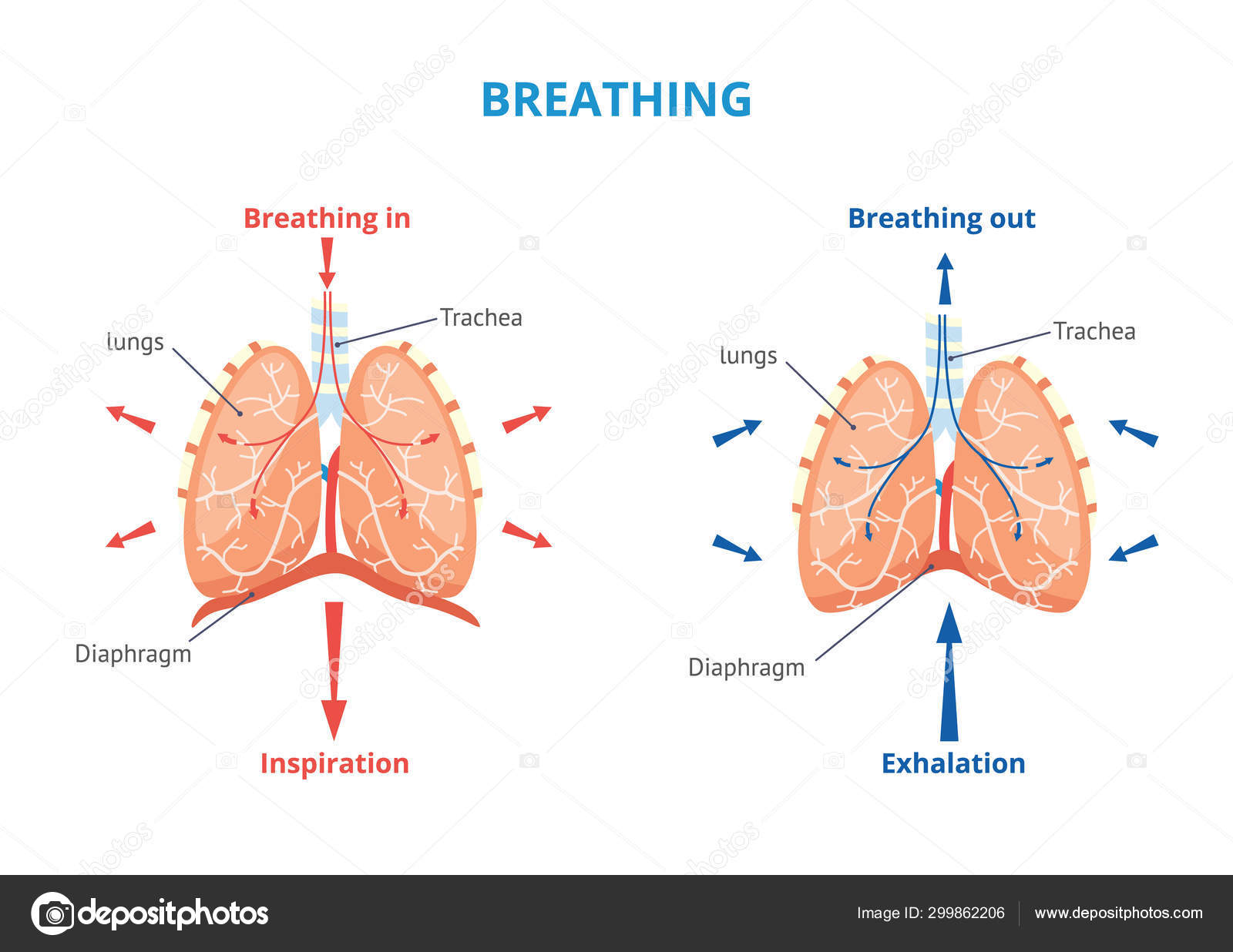 This is one of the most common respiratory diseases, which often develops against the background of chronic obstructive bronchitis.
This is one of the most common respiratory diseases, which often develops against the background of chronic obstructive bronchitis.
Among the main causes of emphysema are tobacco smoking, inhalation of chemicals, as well as hereditary factors. Signs of the disease can appear for a long time, so it is important to consult a doctor in time and start treatment.
An important component of treatment is prevention, which includes quitting smoking, drinking alcohol, regular exercise and proper nutrition. In addition, it is recommended to conduct a timely medical examination to detect diseases in the early stages and the correct prescription of treatment.
Pulmonary emphysema: symptoms, treatment and prevention
Pulmonary emphysema is a chronic disease characterized by gradual destruction of the walls of small air bubbles in the lungs (alveoli). It leads to disruption of gas exchange and a decrease in lung volume.
Treatment of emphysema aims to improve the patient’s quality of life and slow the progression of the disease. This may include medication, physical rehabilitation, and oxygen therapy. In some cases, surgery may be required.
This may include medication, physical rehabilitation, and oxygen therapy. In some cases, surgery may be required.
Prevention of emphysema may include avoiding smoking, reducing lung exposure to harmful substances, weight control, and regular physical activity.
What is emphysema?
Pulmonary emphysema is a chronic disease characterized by destruction of lung tissues and damage to their walls. The main cause of emphysema is smoking, although some forms of the disease can also be inherited or result from occupational activities.
Emphysema leads to a gradual deterioration of lung function and to the development of respiratory failure. Symptoms of emphysema include shortness of breath, fatigue, and intermittent coughing with sputum production. Skin changes on the neck and chest may also occur.
Treatment of emphysema is based on symptom control and improvement of the patient’s quality of life. Doctors usually recommend smoking cessation and also prescribe medications to make breathing easier.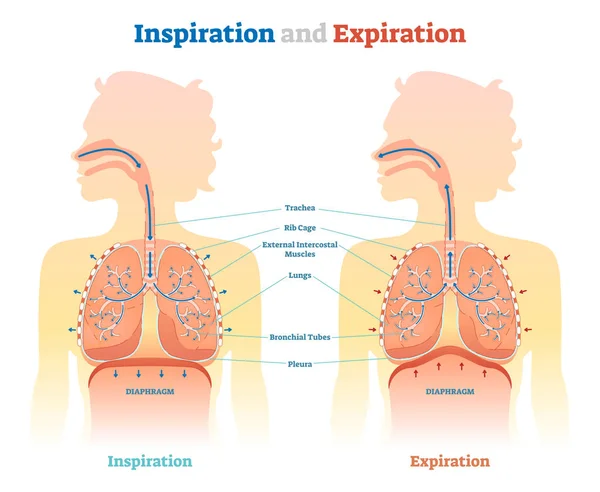 In some cases, oxygen therapy or even surgical treatment may be required.
In some cases, oxygen therapy or even surgical treatment may be required.
- Smoking is the main cause of emphysema.
- Symptoms of emphysema include shortness of breath, fatigue, cough, and skin changes.
- Treatment is aimed at controlling symptoms and improving the patient’s quality of life.
Symptoms of emphysema
Cough: the appearance of a persistent dry cough, which is often aggravated by physical exertion.
Difficulty breathing: at first it appears only during exercise, but eventually begins to occur at rest.
Fatigue: Patients experience rapid fatigue when performing routine tasks such as walking or climbing stairs.
Chest pain: the appearance of pain or pressure in the chest.
Blueness of nails and lips: lack of oxygen can cause pale skin and mucous membranes.
Chest expansion: In advanced emphysema, the chest may expand.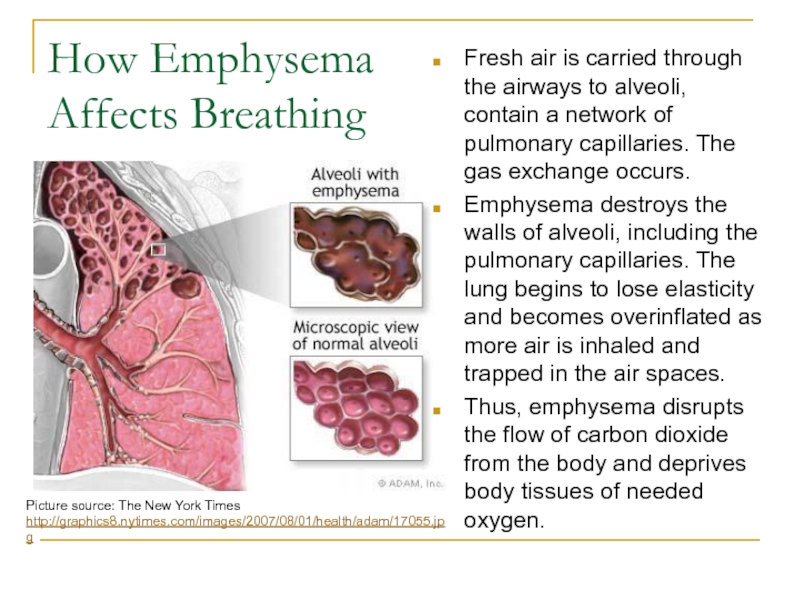
Wheezing and wheezing: unusual sounds in the lungs that may be heard when breathing.
Although symptoms may vary, emphysema is characterized by persistent difficulty breathing and fatigue. If you notice any of these symptoms, see your doctor for a proper diagnosis and treatment.
Diagnosis of emphysema
Emphysema is a chronic disease that causes damage to the alveoli of the lungs, causing them to lose their elasticity and become large and inflated.
X-ray tomography or computed tomography can be used to diagnose this disorder. It will allow the doctor to see changes in the lungs and assess their condition.
When diagnosing emphysema, your doctor may also do blood and sputum tests to determine the cause.
What is the treatment for pulmonary emphysema?
Emphysema is a chronic disease often caused by smoking or long-term exposure to harmful substances. Treatment for emphysema aims to reduce symptoms, improve quality of life, and prevent progression of the disease.
Primary treatments:
- Smoking cessation: Smoking cessation is the first step in the treatment of emphysema. If the patient continues to smoke, no medication or procedure can lead to a complete recovery.
- Breathing exercises: special breathing exercises help to improve the patient’s quality of life, reduce the frequency of attacks and increase pulmonary ventilation.
- Medications: Your doctor may prescribe medicines that dilate your bronchial tubes and improve breathing. Also, anti-inflammatory and mucolytic drugs may be prescribed to reduce inflammation and thin the mucus, respectively.
- Oxygen Therapy: This method is used for severe cases of emphysema when the oxygen level in the blood is very low. Oxygen is delivered through a mask or nasal cannula.
- Surgery: In some cases, for patients with severe emphysema, surgery, such as pulmonary volume resection or lung transplantation, may be recommended.
 However, these methods are used only in extreme cases.
However, these methods are used only in extreme cases.
It is important to remember that emphysema is a chronic disease that cannot be completely cured. Effective treatment can help improve the patient’s condition and prevent disease progression.
Prevention of emphysema
Emphysema is a chronic disease that affects the respiratory system and leads to poor quality of life. However, there are methods that can help prevent the development of this disease:
- Smoking cessation. Smoking is one of the main causes of emphysema. Therefore, it is important to completely abandon this bad habit.
- Proper nutrition. The diet should contain vitamins and minerals that contribute to the health of the respiratory system.
- Healthy lifestyle. Regular exercise and a healthy lifestyle in general will help strengthen the immune system and prevent the development of lung diseases.
If you have a predisposition to developing emphysema, or have already been diagnosed, see your doctor. He will be able to talk about additional methods of prevention and help develop an individual treatment program.
He will be able to talk about additional methods of prevention and help develop an individual treatment program.
Complications of emphysema
Emphysema is a serious disease that can lead to serious complications. One of the most common complications is chronic obstructive pulmonary disease, which can lead to a deterioration in the patient’s quality of life.
In the case of emphysema, it is very important to take measures to prevent the development of complications. This may include quitting smoking, regular exercise, proper nutrition, and treatment with anti-inflammatory drugs.
- Chronic obstructive pulmonary disease: impairment of the patient’s quality of life.
- Pulmonary haemorrhages: Impaired lung function and increased risk of infections.
- Risk of lung cancer: the possibility of developing cancer.
- Respiratory failure: deterioration of the patient’s condition and impaired lung function.

Folk remedies for the treatment of pulmonary emphysema
1. Herb tincture
One of the most common folk remedies for treating emphysema is the herb tincture. Cornflower, forest St. John’s wort, St. John’s wort, and also dandelion are usually used as grass.
2. Onion decoction
Onion is one of the most affordable and effective products for the treatment of emphysema. To prepare onion broth, you need to take 2-3 onions, cut them and pour water. Then the mixture must be brought to a boil and insisted for 30-40 minutes.
3. False pepper in the treatment of emphysema
False pepper is known for its anti-inflammatory properties and can be used to treat emphysema. To do this, you need to prepare a decoction of false pepper, which can be added to food or drunk as a tea.
4. Milk decoction with honey
Milk with honey is a long-known antitussive recipe of traditional medicine. It can also be used to treat emphysema. To prepare a decoction, you need to mix milk and honey, heat over a fire and drink daily.
To prepare a decoction, you need to mix milk and honey, heat over a fire and drink daily.
Problems in the treatment of emphysema
The treatment of emphysema can face several problems that can hinder the healing process. One such problem is the lack of efficacy of drugs used to reduce inflammation and improve lung function. This can lead to aggravation of symptoms and the development of complications.
Another problem can be the misapplication of lifestyle advice such as quitting smoking and increasing exercise. Failure to follow these recommendations can slow down the healing process and lead to an aggravation of the patient’s condition.
Finally, one of the main problems in the treatment of pulmonary emphysema is the lack of an effective way to restore damaged lung tissue. With severe emphysema, the recovery process may be limited, which can lead to chronic breathing problems.
Types of pulmonary emphysema
Centrilobular emphysema – when the destruction of the alveoli occurs along the central path of the air ducts, and the air channels retain their normal size. This type of emphysema most commonly develops in male smokers and may be associated with upper respiratory disease.
This type of emphysema most commonly develops in male smokers and may be associated with upper respiratory disease.
Panacinar emphysema – when the air channels, starting from the small bronchioles, and then the alveoli, are completely expanded. This type of emphysema is most often associated with alpha-1 antitrypsin deficiency.
Bullous emphysema – when huge air cavities – bullae – form in one or more places in the lungs. This type of emphysema can be congenital or acquired and is usually seen in young adults who exercise and smoke.
How can emphysema be prevented?
Like many other illnesses, emphysema can be prevented or delayed if certain measures are taken. A few tips to help you avoid this disease:
- Do not smoke: This is one of the main risk factors for emphysema. If you smoke, you must immediately quit this habit.
- Avoid harmful substances: Some harmful substances such as dust, toxic fumes, chemical fumes can damage the lungs.

- Keep your immune system in good shape: This will help you avoid lung infections that can cause emphysema.
- Live a healthy lifestyle: Proper nutrition and regular exercise will help strengthen your lungs and improve their function.
By taking these steps, you can reduce your risk of developing emphysema and stay healthy.
Doctors who can help with emphysema
Emphysema is a chronic disease that cannot be completely cured, but symptoms can be managed and the progression of the disease can be slowed down. There are several specialists who can help patients with emphysema:
- Therapist . This doctor can help in the diagnosis and initial treatment of emphysema. He will monitor the progress of the disease and refer the patient to other specialists if necessary.
- Pulmonologist . This doctor specializes in the treatment of lung diseases. Often he will be the chief physician who cares for patients with emphysema.


 This helps open airways and makes breathing easier. Most bronchodilators are taken with a device called an inhaler.11
This helps open airways and makes breathing easier. Most bronchodilators are taken with a device called an inhaler.11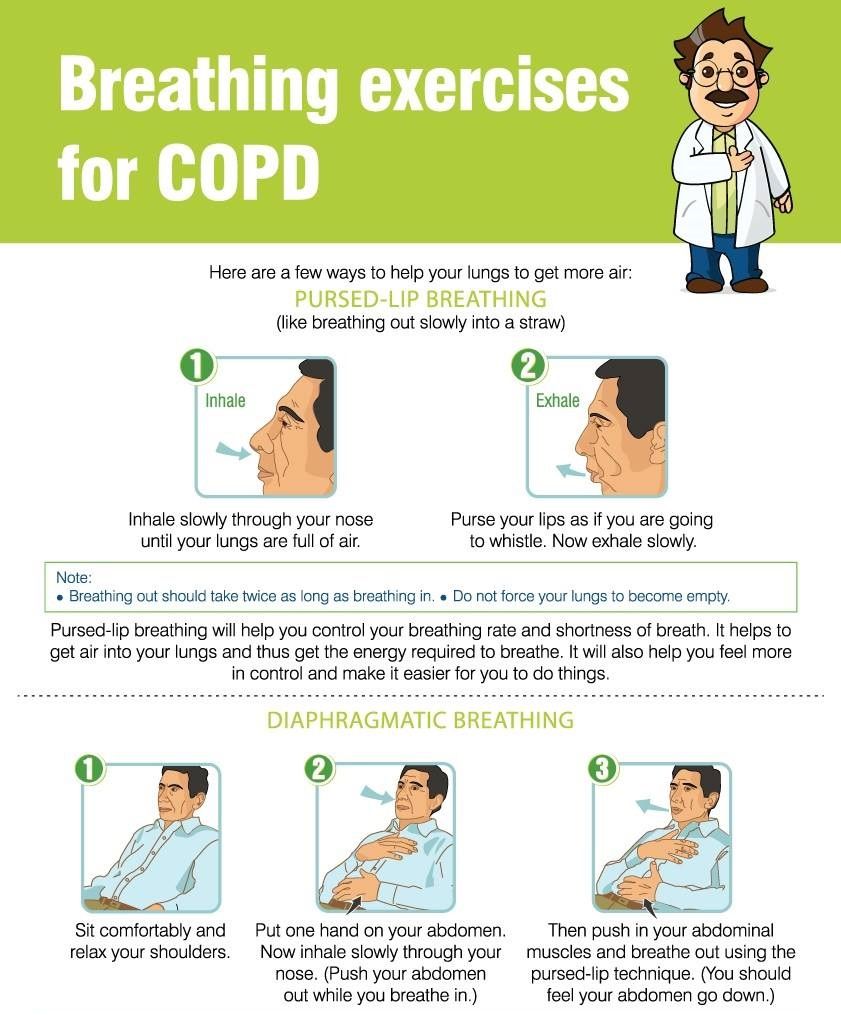
 Atlanta: U.S. Department of Health and Human Services, Centers for Disease Control and Prevention, National Center for Chronic Disease Prevention and Health Promotion, Office on Smoking and Health [accessed 2015 Nov 11].
Atlanta: U.S. Department of Health and Human Services, Centers for Disease Control and Prevention, National Center for Chronic Disease Prevention and Health Promotion, Office on Smoking and Health [accessed 2015 Nov 11].
 (Your doctor also may directly measure your blood oxygen level with a finger probe known as an oximeter.)
(Your doctor also may directly measure your blood oxygen level with a finger probe known as an oximeter.)
 It also shows how well air moves in and out of the lungs.
It also shows how well air moves in and out of the lungs.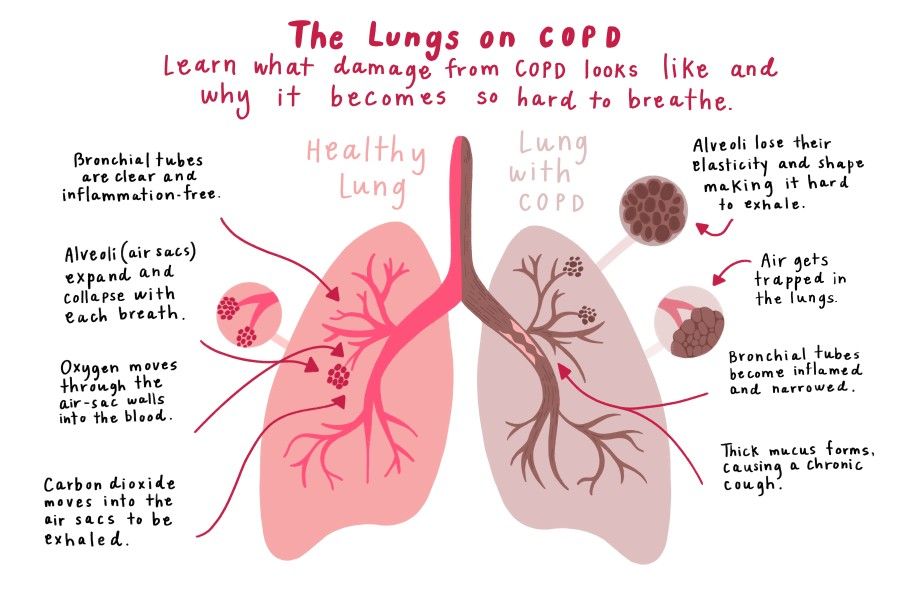 The purpose of this rehabilitation is to reduce shortness of breath and improve the ability to perform physical exercises.
The purpose of this rehabilitation is to reduce shortness of breath and improve the ability to perform physical exercises.
 6 Prevention of emphysema
6 Prevention of emphysema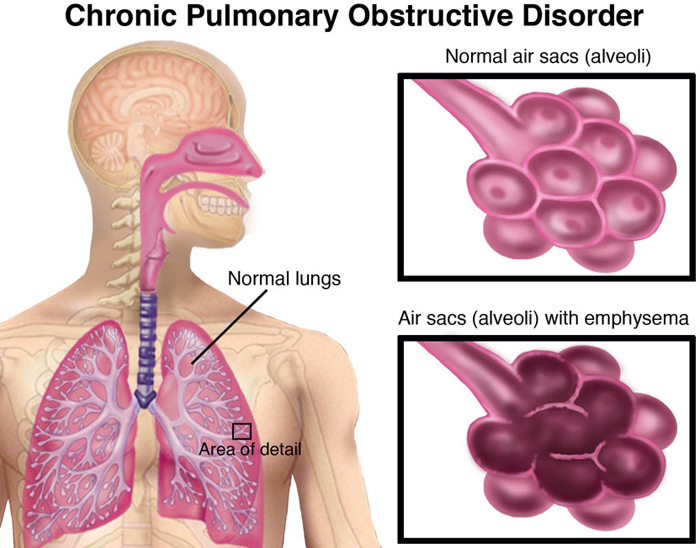 However, these methods are used only in extreme cases.
However, these methods are used only in extreme cases.

